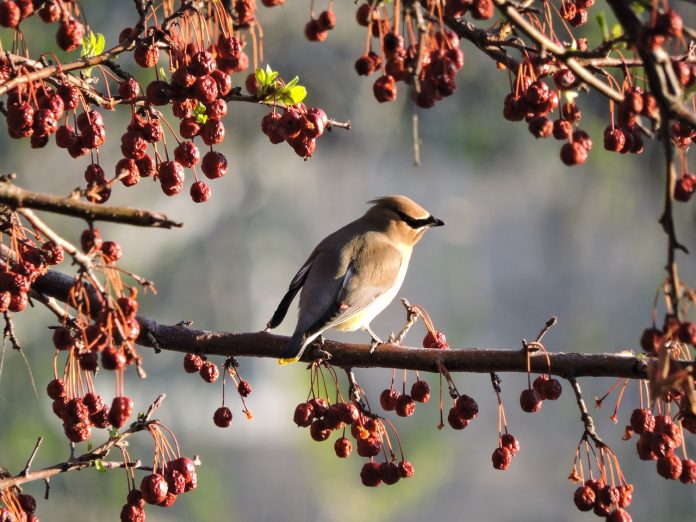It doesn’t happen very often, but a few weeks ago a flock of songbirds made national news on radio and television broadcasts and in major newspapers.
Back in early October residents of Gilbert, Minnesota were alarmed by flocks of birds behaving erratically and flying into traffic. The birds turned out to be cedar waxwings.
Calls came into the Gilbert Police Department about birds that were flying into windows and acting confused. Some even suggested they might be drunk.
Frost
It caused such concern that the chief of police issued a statement explaining that an early frost had caused berries on trees and shrubs to ferment earlier than usual and, indeed, birds that ate them actually became intoxicated from the alcohol produced by the fermenting fruits.
This is actually a common phenomenon. My first encounter with drunk birds came in February 1972 while a sophomore at the University of Delaware.
When I left the dorm for an early morning class, I found a flock of cedar waxwings staggering under a holly tree heavy with fruit.
At the time I didn’t know what had happened, so I picked up about a dozen birds, placed them in a paper bag, clipped the bag shut, and went to class.
Later that day I told my ornithology professor what had happened, and he said the birds had probably eaten fermented berries, and I had done the right thing.
“By the time you get back to your dorm,” he explained, “those waxwings will have metabolized the alcohol and will be ready to release.”
Over the last 46 years, I’ve encountered drunk birds a number of times, and I suspect many readers have been baffled by similar observations.
Birds that are disoriented and confused are easy prey for predators, and they are often killed in traffic.
Catch
If you find birds staggering around your backyard or neighborhood, the quickest and easiest solution is to catch them and place them in a small paper grocery bag.
Clip the bag shut with a clothespin and put in a cool dark place for three or four hours. Then release them before dark.
If found late in the day, keep the birds in the bag overnight and release them at first light. If the birds are too difficult to catch, they aren’t drunk enough to need rescuing.
And any time you handle wild birds, be sure to wash your hands thoroughly with soap and hot water.
Though cedar waxwings might be considered the drunks of the bird world, any fruit-eating bird can get drunk under certain circumstances.
Like many people, robins, bluebirds, other thrushes, mockingbirds, catbirds, and thrashers also find it difficult to resist the fermented “fruit of the vine.”
Joke
Though I always enjoy when birds make national news, too often it is treated lightly.
Late night comedians, national newspapers, and even network anchors could not resist joking about drunk birds. And I laughed, too.
But it’s too bad opportunities were missed to educate the public about a seasonal problem that confronts fruit-eating birds every year.
Attempts at humor I’ve come across include references to Big Bird, Tweety Bird, Angry Birds, drunk tanks for birds, roadrunners running wild, and Woodstock bullying Snoopy.
Instead, we should use these opportunities to explain that after a few hard freezes, sugars in fruits ferment and convert into alcohol. That’s how hungry birds can get drunk.
Though it happens most often in late winter, it can happen any time after a hard frost. Or perhaps we should simply adjust our attitude about 90 degrees and look at fermented berries that cause birds to stagger around and pass out as a feeding opportunity for hungry predators.













